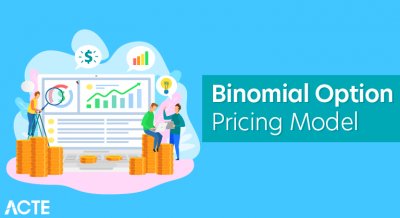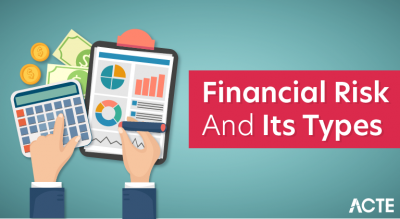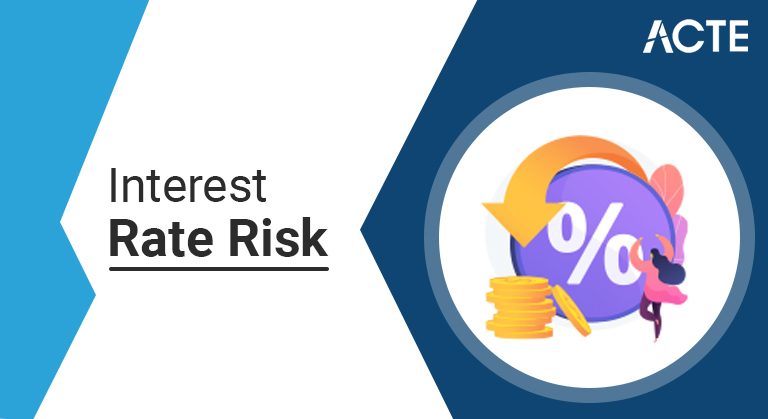
Interest rate risk is the potential for investment losses that result from a change in interest rates. If interest rates rise, for instance, the value of a bond or other fixed-income investment will decline.
- Introduction to Interest Rate Risk
- Understanding Interest Rate Risk
- Interest Rate Risk-Reasons for changes
- Bond Price Sensitivity
- Examples of Interest Rate Risk
- Which Investors are Susceptible to Interest Rate Risk?
- Interest Rate Risk Should Not Be Ignored
- Benefits for Interest Rate Risk
- Conclusion
Introduction to Interest Rate Risk:
Interest rate risk is the chance to lose investment thanks to an amendment in interest rates. If the rate of interest rises, for instance, the worth of a bond or alternative fastened financial gain investment can decrease. The amendment within the bond worth given the amendment in interest rates is understood because of the length of your time.
Interest rate risks are often reduced by holding bonds at completely different times, and investors can also scale back rate of interest risk by combining fastened financial gain investments with variable interest rates, options, or alternative rising interest rates. Interest rate risk has the result that changes in overall interest rates can scale back the worth of a bond or alternative fastened interest rate:
As interest rates rise the bond costs decrease, and contrariwise. This suggests that the market value of existing bonds is declining so as to cut back the enticing costs for brand new bond problems. Interest rate risk is measured by the period of the fastened financial gain securities, with semi permanent bonds having high value sensitivity to live changes.Interest rate risks are often reduced by varying the degree of maturity of the bond or enclosed off exploitation of an alternate rate of interest.
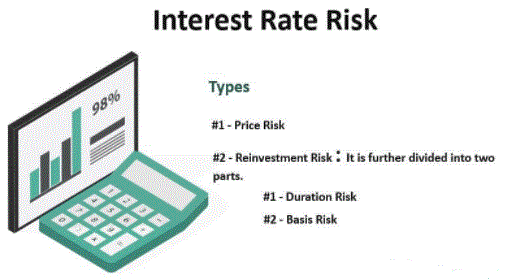
- Changes in interest rates can affect many investments, but also affect the value of bonds and other securities that are directly fixed. Therefore, bond owners carefully monitor interest rates and make decisions based on how perceived interest rates change over time.
- On fixed income securities, as interest rates rise security prices fall (on the contrary). This is because when interest rates rise, the cost of holding on to those bonds rises – that is, the costs of losing the best investment are high. So interest rates on bonds are relatively low as the price goes up, so if a 5% bond trades at the same $ 1,000 level where the interest rate is also 5%, it is less attractive to achieve that.
- The same by 5% when prices in some areas begin to rise, say 6% or 7%. To compensate for the economic downturn in the market, the value of these bonds must be reduced – because who would want to have a 5% interest rate when they can earn 7% for a particular bond.
- Therefore, in fixed-rate bonds, when interest rates rise above the level of a fixed rate, investors switch to investments that reflect higher interest rates. Bonds issued before interest rates change can only compete with new issues by lowering their prices.
- Interest rate risk can be controlled through fencing or separation strategies that reduce the effective duration of the portfolio or ignore the impact of rate changes. For more information, see: Managing interest rates.
Understanding Interest Rate Risk:
Interest Rate Risk-Reasons for changes:
Short-term political benefits: Lowering interest rates might give economic progress for short-run development. Under traditional circumstances, several economists suppose that lower interest rates can give short-run gains in economic activity that may presently be resolved thanks to inflation. A speedy rise may influence the election. Several economists represent major personal banks so as to scale back the political impact on interest rates.
Deferred expenditure: Once borrowed cash the investor delays pin money on consumables. As from the purpose of reading your time individuals like merchandise currently instead of later merchandise, within the free market there’ll be a decent rate.
Expectations on Inflation: Most economies typically show rising inflation, which implies that an explicit quantity of cash buys fewer assets within the future than at the moment. The recipient must compensate the investor for this.
Other investments: The investor contains a selection between defraying his cash on a special investment. If he chooses one, he’s sacrificing the advantages of others. completely different investments contend with success for finance.
Investment risks: There’s perpetually the chance that the recipient can run out of cash, run away, die, or fail to borrow cash. This suggests that the investor sometimes charges a risk premium to make sure that, throughout its investment, it’s stipendiary for people who fail.
Liquidity Preferences: Individuals choose to have their resources on the market in an exceedingly speedily ever-changing kind, instead of a long kind.
Taxes: As a result of a number of the profits from interest is also tax deductible, the investor might charge the next rate to hide this loss.
Banks: Banks are also inclined to alter interest rates to hamper or hamper economic processes. This involves raising interest rates to lower the economy, or lowering interest rates to push the economic process.
Economy: Interest rates might vary looking at the economic scenario. it’ll typically be found that if the economy is powerful it implies that interest rates are higher, if the economy is weaker interest rates are lower
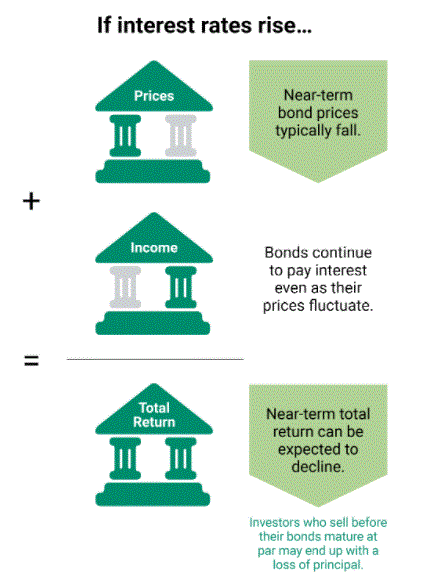
Bond Price Sensitivity:
The number of existing invariable securities with completely different growth dates decreases by varied degrees as interest rates on the market increase. This condition is termed “price sensitivity” and is measured over the length of the bond.
For example, suppose there are 2 mounted bonds, one for one year and one for ten years. If market interest rates rise, an annual mortgagee will reinvest in an exceedingly higher level of security when holding on to a low-yield bond for a maximum amount of 1 year. however the 10-year-old security owner has been command surety for one more 9 years.
That proves the low worth of semi permanent security. Once it involves maturity, its worth decreases considerably compared to the given increase in interest rates. Note that this sensitivity happens at a declining rate. A 10-year bond is a lot more sensitive than an annual bond, however a 20-year bond is a smaller amount sensitive than a 30-year bond.
The semipermanent bond sometimes offers a maturity risk premium within the variety of a better intrinsic come rate to atone for the accumulated risk of charge per unit fluctuations over time. The longer the length of the semipermanent securities the higher the chance of a better charge per unit on those securities. so as to compensate investors for taking further risk, the expected return on semi-permanent securities is usually on top of the short-run securities rates. This is often referred to as the expansion risk premium.
Other risk premiums, like automatic risk premiums and liquidity risk premiums, might confirm the costs offered by bonds.
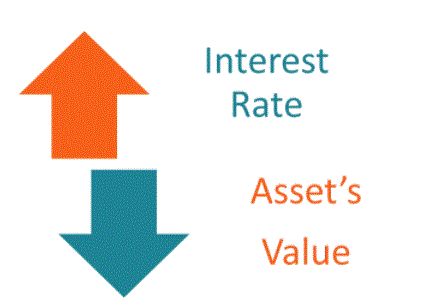
Examples of Interest Rate Risk:
For example, suppose an investor buys a five-year bond, $ 500 for a 3% coupon. Then, interest rates rise to 4%. The investor will have a problem selling the bond when new and attractive bond offers come into the market. Low demand also triggers lower prices in the secondary market. The market value of a bond may fall below its actual purchase price.
The opposite is true. A 5% return bond has a higher value if interest rates fall below this level as the bond holder receives a fixed market interest rate.
Financial policy:
Targeted charge per unit is a crucial money policy tool and is taken into account once addressing volatile factors like investment, inflation, and state. The world’s largest banks square measure typically vulnerable to lower interest rates once it involves increasing investment and outlay on the country’s economy. However, low interest rates as a significant policy will be risky and should result in the creation of an associate degree economic bubble, wherever giant amounts of investment square measure poured into the native market and therefore the stock exchange. In developed economies, interest rates change square measure created to stay inflation at intervals the firing range of economic activity or to balance interest and economic process to stop economic process.
History
Over the past 2 centuries, interest rates have skyrocketed with national governments or central banks. As an example, the speed of the Federal Reserve System federal funds rate within the u. s. varied between zero.25% and nineteen from 1954 to 2008, whereas the essential rate of the Bank of European nation varied between zero.5% and V-day from from 1989 to 2009, and Federal Republic of Germany met virtually ninetieth levels within the late Nineteen Twenties to twenty within the 2000s. In a shot to curb the increase in hyperinflation in 2007, the financial organization of African nation enlarged interest rates to 800%.
Interest rates on leading credits within the late Seventies and early Nineteen Eighties were a lot of beyond those recorded – beyond America costs since 1800, than British peaks since 1700, or Dutch peaks since 1600; “Since the appearance of recent money markets, there has ne’er been one long-run high price” like this era.
Possibly before the fashionable money markets, there are some accounts where savings deposits will earn a minimum of twenty fifth annual returns and up to five hundredths. (William Ellis and Richard Dawes, “Studies in Industrial Health …”, 1857, p III-IV)
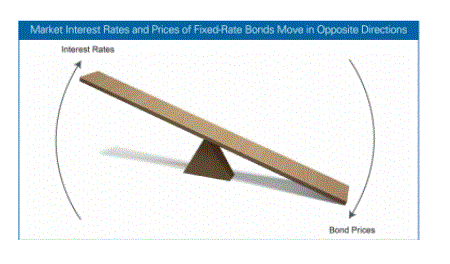
Which Investors are Susceptible to Interest Rate Risk?
Interest rate risk may be a risk once the charge per unit fluctuations fluctuate. charge per unit risk directly affects fastened financial gain bond securities. Since interest rates and bond costs are negatively connected, the danger related to rising interest rates ends up in lower bond costs, on the contrary. Bond investors, particularly those that invest in long-run interest rates, are at bigger risk for charge per unit risk.
Suppose an individual buys a third bond for a 30-year fastened worth for $ ten,000. This bond pays $ three hundred a year for maturity. Now, the charge per unit rises to three.5%, new issued bonds pay $ 350 each year for maturity, minus associate investment of $ ten,000. If the three bond holders continue to carry on to his bond for growth, he loses the chance to earn the next charge per unit.
Alternatively, he may sell his three-dimensional bond on the market and obtain the bond at the next charge per unit. However, doing so ends up in the capitalist earning a lower rate on his three-dimensional bond sales as he’s now not enticing to investors because the fresh issued three.5% bonds are out there. In distinction, changes in interest rates additionally have an effect on equitable investors however less often than bond investors. This can be as a result of, as an example, once interest rates rise, the organization’s borrowing prices additionally increase. This might cause the corporation to delay disposition, which may lead to less payment. This reduction in payment could bog down business growth and lead to lower profit margins and ultimately lower stock costs for investors.
Interest Rate Risk Should Not Be Ignored:
As with any risk management test, there is always the option to do nothing, and that is what most people do. However, in unexpected cases, fencing is sometimes a disaster. Yes, there are costs to fencing, but what are the costs for large trips in the wrong place?
Forward: A forwarding contract is a basic product of interest rate management. The idea is simple, and many of the other products discussed in this article are based on the current concept of an exchange agreement.
Transfer-Rate Agreements (FRAs): FRA is based on the concept of a forwarding contract, in which the determinant of profit or loss is the interest rate. Under this agreement, one party pays a fixed interest rate and receives a floating interest equal to the reference. Actual payments are calculated based on the estimated value and payment made at intervals determined by the parties. Only residual payment is made — the loser pays the winner, figuratively speaking. FRAs are always paid in cash.
The future: The futures contract is the same as the previous one, but it offers its partners less risk than the previous contract — that is, the automatic reduction and risk of debt due to the inclusion of a mediator.
Exchange: As it sounds, exchange is an exchange. Clearly, the interest rate change looks very similar to the FRA combination and involves an agreement between cooperating companies to exchange future cash flow sets. The most common type of interest rate change is a regular vanilla substitution, which involves one organization paying a fixed interest rate and earning a floating amount, while another organization paying a fixed amount and earning a fixed rate.
Options: Interest rate management options are option contracts where the primary collateral is a liability. These tools are useful for protecting the parties involved in floating rate loans, such as adjustable-rate mortgages (ARMs). The set of interest rate call options is referred to as the interest rate measurement; the combination of interest rate setting options is referred to as the low interest rate. Normally, a cap is like a wire, and the bottom is like a set.
Exchange: The exchange, or exchange option, is simply an option to enter the exchange.
Embedded options: Many investors experience interest-based tools with embedded options. If you have ever bought a bond with a call provision, you are also in the club. Your bond issuer ensures that if interest rates fall, they can drive your bond and issue new bonds with a lower coupon.
Capitals: A cap, also called a sling, is an option to strike at an interest rate. An example of its application would be a long-term borrower, or pay a premium to buy leave and receive cash payments from a (short) cap seller when the reference interest rate exceeds the cap strike rate. Payments are designed to offset interest rates on borrowing rates.
Stairs: Just as the placement option is considered as a screenshot of the call option, down the screen image of the cap. Low interest rates, such as cap, are a series of segment options, except that they are fixed options and the segment components are called “floorlets.” For anyone tall, the floor is paid for by the maturity of the floors if the reference level is below the level of the floor strike. The lender uses this as a precautionary measure to protect against falling floors of the remaining floating loans.
Columns: A protective collar can also help manage interest rate risk. Consolidation is achieved by buying a cap and selling the stock (or vice versa), just as a collar protects a long-term investor in stock. A low-cost collar can also be set up to reduce the cost of fencing, but this reduces the potential benefits that can be enjoyed by the interest rate movement in your favor as you put the roof on your potential profit.
Bottom Line: Each of these products offers an interest rate risk, with different products most suitable for different situations. However, there is no free lunch. In either case, a person is sacrificing something — be it money, optional premiums, or the cost of opportunities, which may be inescapable.
- Managing your interest rate risk can bring benefits for your business.
- Protection from unwanted interest rate changes.
- Fixed interest rates on long-term loans or investments.
- Opportunities to take advantage of favorable market conditions.
- Improved financial forecasting and budget.
- Financial risk assessment.
- Perform an interest rate risk assessment related to your activities.
- Identify potential losses due to interest rate fluctuations.
- We introduce risk management measures.
- Provide well-designed fencing recommendations based on your exposure to risk.
Benefits for Interest Rate Risk:
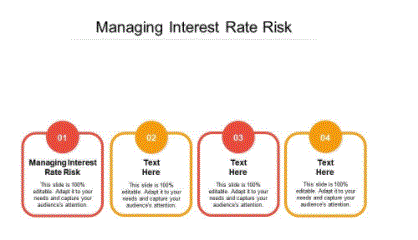
Conclusion:
This chapter has examined the danger of interest rates and their role in overall bank exposure. Close to the danger of debt, this has become a serious supply of risk for banks traditionally. Rate risk is coupled to the term structure of interest rates. Our analysis of term structure each beneath certainty and uncertainty shows however yield and maturity are connected. In each case of uncertainty and uncertainty, the idea of non hazardous arbitrage plays a key role. Moreover, our analysis shows that the danger of holding a bond is assessed more accurately in terms of its period than its maturity amount. An outline of the time and its compatibility in estimating the volatility of bond costs shows however the bond-paying bonds ought to be analyzed. we have a tendency to conjointly examined the idea of fluctuations and interest rates


